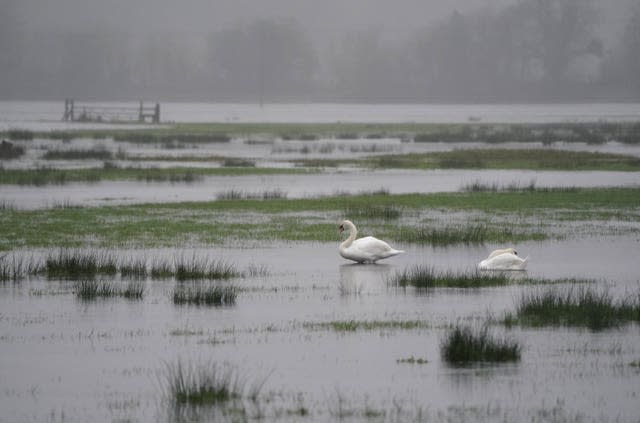England’s driest February in 30 years, says Met Office

England has had its driest February in 30 years, according to provisional figures from the Met Office.
Just 15.3mm of rain fell, with Bedfordshire, Greater London and Essex all seeing figures to put last month among the top five driest Februarys on record.
Essex was the county with the least amount of rain – just 3.5mm which is 8% of the average.

The UK as a whole saw less than half the average rainfall for the month, at 45%, with 43.4mm falling.
Scotland was the only country to buck the trend, with 69% of average rainfall, while Wales and Northern Ireland also suffered dry spells, with 22% and 34% respectively.
Dr Mark McCarthy, of the Met Office’s National Climate Information Centre, said: “The second half of January was largely dry and that theme continued through February with high pressure centred over the UK for much of the month, helping to repel advancing fronts and keep low-pressure systems away, and resulting in a notable long winter dry spell.
“That high pressure has principally, but not exclusively, been focused around the southern half of the UK, meaning southern England has been particularly dry, with just 9.7mm of rain falling here, which is just 16% of its average.”
In February, the National Drought Group issued a warning to say the UK is one hot dry spell away from returning to widespread drought conditions.
East Anglia, Devon, Cornwall and the Isles of Scilly still remain in drought status – with most other areas covered by the Environment Agency recovering.

Environment Agency executive director and National Drought Group chair John Leyland said: “While most water levels have returned to normal across much of the country, low rainfall in recent weeks highlights the importance of remaining vigilant.
“We cannot rely on the weather alone, which is why the Environment Agency, water companies and our partners are taking action to ensure water resources are in the best possible position both for the summer and for future droughts.
“As ever, it is important that we all continue to use water carefully to protect not just our water resources; but our precious environment and the wildlife that depends on it.”
The lack of rain came after a stormy period in early January that saw flooding in the south west and which brought rainfall figures to about average by the end of the month, the Met Office said.

The UK also saw its joint fifth mildest February on record in a series that goes back to 1884.
Winter was also slightly milder than normal, despite sub-arctic conditions at the start of December, with an average mean temperature of 4.3°C, which is 0.2°C above average.
Temperatures dropped to -17.3°C at Braemar, Aberdeenshire, on December 12. In contrast, the highest temperature recorded this winter was 17.2°C at Pershore, Worcestershire, on February 17.
Dr McCarthy added: “Winter started with one of the most significant spells of low temperatures to affect the UK since the exceptional December of 2010.
“After that, however, temperatures have generally bounced back meaning that the season ends as slightly milder than average.
“The one relatively consistent visitor to England and Wales during winter was the sun and many regions saw plenty of winter sunshine, in contrast northern Scotland and Northern Ireland both had a fairly dull winter.
“It’s a mark of how dry February was that winter’s rainfall figures are 19% lower than the long-term average for the season, as rainfall had been very close to average at the close of January.”

 Yahoo News
Yahoo News 